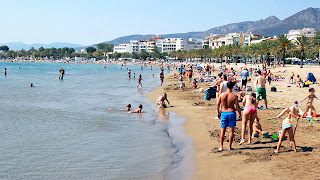Tour Operator Thomas Cook
to Open New Spanish Airline
 |
| Good news for Spain and traveling passengers |
During a time where a number of cheap airlines are going
bust – such as Air Berlin and Monarch – or are struggling with staffing
problems – such as Ryanair – Thomas Cook is looking to take advantage of the
uncertainty of the industry by entering what could be the most competitive, and
potentially lucrative, aspect of the aviation industry; serving the country of
Spain.
Spanish airports are some of the busiest in Europe, bringing
in holidaymakers from around the world across the year, mostly thanks to the perennial
popularity of the country as being one of the very best tourist destinations in
the world.
This is why Thomas Cook are to base their newest airline in
Palma de Majorca, and are to begin flights to and from the Balearic Island from
early 2018. The fleet will start out as three Airbus A320 planes, flying with a
Spanish operating license, but Thomas Cook has said that they are likely to
increase their fleet to meet the demand they expect to see.
Chief Ariline Officer of Thomas Cook Christopher Debus
released a statement saying that the new base and airline will provide them
with the platform to manage the seasonal demand for their business better,
giving them better control over things at a lower cost as they continue
expanding their destination choices for customers.
As large a company as Thomas Cook is, even they typically
make losses during the winter. This is why operating seasonal staff directly
from Spain allows the company to respond better to the demand and maintain
profits between November and March, which is generally the quiet times for the
company and Spanish tourism as a whole.
Operating out of Majorca allows the Thomas Cook Balearics
Division to better loan planes to other group divisions, meaning that the firm
should have a better looking balance sheet. Thomas Cook currently have 94
aircraft and deal with a total of 16.7 million passengers on an annual basis.




















